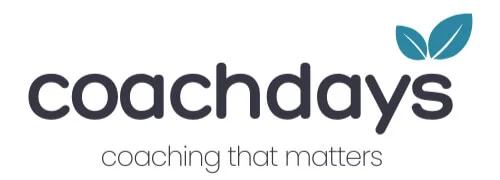Starting a coaching business means choosing how your business will make money. Regardless of which coaching niche you’re in, the right coaching business model sets the foundation for a steady income and helps you grow over time. Knowing which model fits your skills and goals is key to turning your passion into a reliable source of income.
You can offer one-on-one coaching, group sessions, or even create online courses. Each option has its own benefits.
- Private one-on-one coaching allows deep connections but limits how many clients you can take.
- Group coaching programs and courses help you reach more people and scale your business faster.
By picking a model that works for you and your clients, you can build a business that fits your lifestyle. With the right plan, coaching can be both rewarding and profitable, giving you more freedom and impact.
KEY TAKEAWAYS
- A strong business model is crucial for steady coaching income.
- Different coaching formats offer different growth opportunities.
- Choosing the right model helps balance work, impact, and profit.
What is a Successful Coaching Business Model?

A coaching business model is a clear plan for how you deliver your coaching services and make your business work. It shows how you create value for your clients and how you get paid for your services. Your business model helps you organize your work and plan for growth.
Having a good coaching business model means you know who your clients are and what problems you solve. It guides you on how to reach your clients and keep them engaged. Without a model, your business can feel like guesswork.
Your coaching business model includes things like:
- The type of coaching you offer (one-on-one, group, or online courses)
- How do you price and package your services
- Ways you find and keep clients
- How do you deliver coaching sessions and follow up
A strong model should also help you balance your time and income. It can let you earn more by working smarter, not harder. For example, group coaching can help you reach more people without needing more hours.
You will find success by focusing on what you offer and who you serve. Your business model is a tool to keep you organized and clear about your coaching purpose. It helps you stay confident and professional while growing your coaching business.
Most Profitable In-Person and Online Coaching Business Models

Choosing the right coaching business model is just as important as choosing your coaching niches to serve, it helps you organize your services and focus on your strengths. It shapes how you work with clients, how many you can serve, and where your income comes from. Below are several effective models you can use to build and grow your coaching business.
1. One-To-One Coaching Practice
This model is the foundation for many life coaches. You work directly with one client at a time, offering personalized sessions tailored to their needs.
It allows you to build strong relationships and provide specific support. You control your schedule and set prices based on the depth and length of coaching sessions.
While it’s simple to start, limits on your time mean your income depends on the number of clients you can manage. It’s a good first step before exploring more scalable options.
2. Group Coaching Program
Group coaching brings together several clients at once, often with similar goals or challenges. This lets you serve more people in less time compared to individual coaching.
You’ll guide group discussions, encourage peer support, and share lessons that benefit everyone. Group sessions can be done online or in person.
This model increases revenue potential and builds a community feel, but requires strong facilitation and planning to keep group members engaged and on track.
3. Mastermind Coaching Model
In this model, you create a small group of committed clients who support each other’s progress with your guidance. It combines coaching with peer-to-peer accountability and idea-sharing.
You facilitate discussions and help the group solve problems together. This model builds strong networks and motivates clients to push themselves farther.
It requires skill in managing group dynamics and ensuring all voices are heard. It is a powerful way to create a supportive and active coaching environment.
4. Partnership Coaching
Partnerships involve working alongside other professionals whose services complement yours, like business consultants or wellness experts.
You share clients, referrals, and sometimes co-create coaching packages. This expands your reach and brings added value without needing to do everything alone.
Partnerships also open new marketing channels, helping you get clients through trusted industry connections. Clear communication and aligned goals are key to success here.
5. Retreat Business Model
Retreats are immersive coaching sessions held in attractive locations over several days. Clients get deep focus time away from daily distractions.
You plan activities, coaching workshops, and personal growth experiences. Retreats command premium prices and offer powerful transformation opportunities.
This model demands advanced organizing skills and upfront investment, but can create memorable experiences that build long-term client loyalty.
6. Consulting Business Model

Consulting combines coaching with expert advice tailored to a client’s business or personal challenges. It often involves problem-solving and strategy-building.
You work with individuals or companies to improve performance, offering actionable plans alongside coaching support.
This model suits coaches with specialized knowledge and can bring higher fees. It requires blending coaching skills with consulting expertise.
7. Membership and Subscription Model
Memberships offer clients ongoing access to coaching resources, group sessions, or exclusive content for a monthly fee.
This model provides steady, recurring income and builds a loyal client base. You might run live group calls, share coaching videos, or create online communities.
It requires consistent engagement and value to keep members active each month. It works well once you have a recognizable brand and following.
8. Courses And Digital Products
Creating online courses or digital products like e-books lets you share your coaching knowledge with many people at once.
Clients learn at their own pace while you earn passive income. This scalable approach requires upfront work to develop quality content, but opens wide markets.
You need to focus on marketing and building an online presence. Courses can complement other coaching services or stand alone as your main offer.
9. In-Person Events for Coaches and Clients
Running workshops, seminars, or live training events provides direct coaching combined with group learning.
Events can target local clients or specialty topics. They help you build authority and attract new coaching clients.
You must manage logistics and create engaging content. While resource-intensive, this model boosts visibility and client trust through personal connection.
10. Blended Approach
This model mixes several types of coaching services, like combining one-to-one sessions with group coaching, digital courses, and membership access.
Blending models can diversify your income and reach different client needs. It allows flexibility and growth while reducing reliance on any single income source.
You’ll need good planning to balance your offers and deliver consistent value. Many successful coaches scale by evolving into a blended business model.
What is the Most Profitable Online Coaching Business Model?

There isn’t one single coaching business model that is the most profitable for everyone. Each model has its strengths, and your choice depends on your style, goals, and clients.
- Just Starting: One-on-one coaching lets you build strong personal connections and charge higher rates. You work closely with clients, which helps you understand their needs deeply. This model is great when you’re starting out, but your time limits how many clients you can serve.
- Building a Community: Group coaching helps you reach more people at once. It offers community support, which many clients find valuable. Group coaching lets you scale your income without needing to increase your hours proportionally.
- Building a Team: Supporting other coaches is a smart way to expand without working directly with every client. You train others to deliver your method, freeing your time and growing your business faster.
- Automate Your Coaching: Online courses are very scalable and can bring steady income. Once created, you can sell them over and over. But courses require marketing skills to sell well, so they often work best after you’ve tested your coaching methods with live clients.
Each coaching business model fits different situations and preferences. You might start with private coaching, then mix in group sessions or courses later. The most profitable model is the one that aligns with what you enjoy and what your clients need.




Leave a Reply